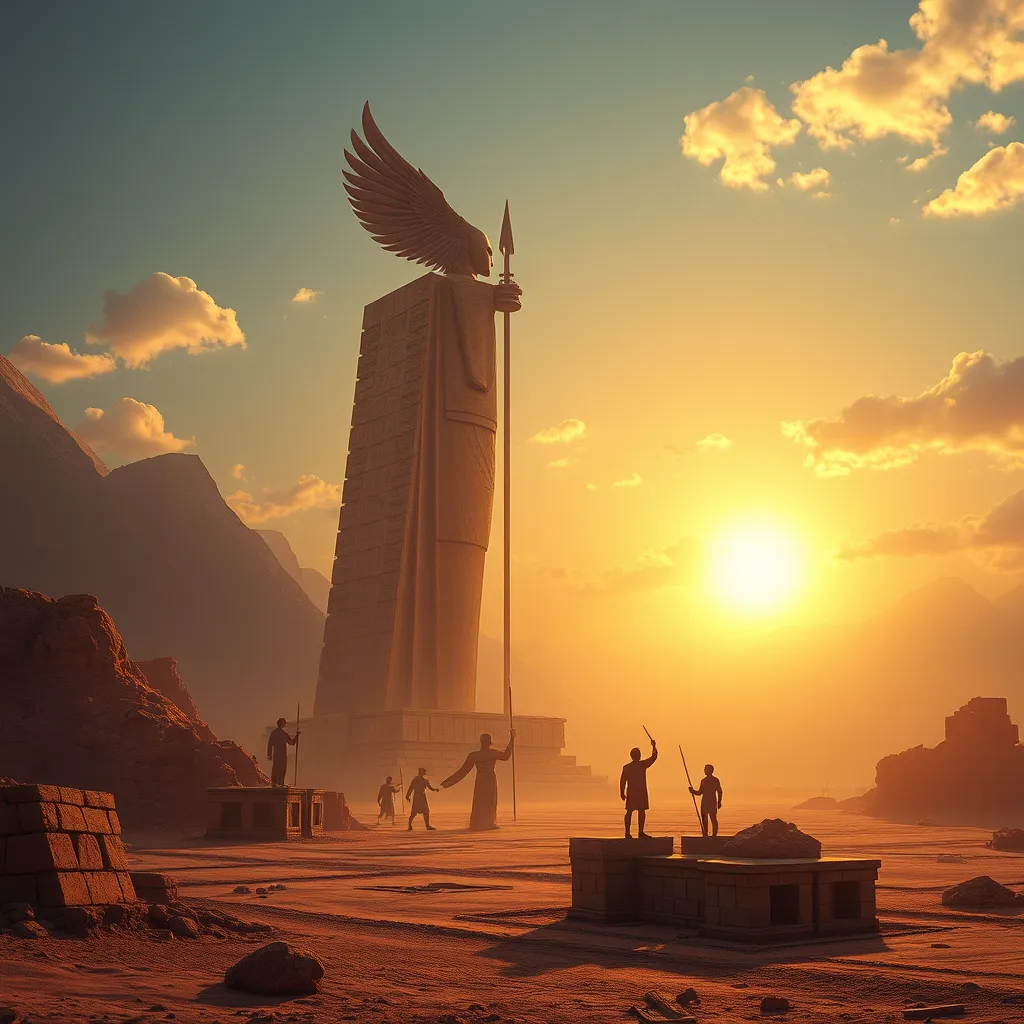The Duat: A Chronicle of the Dead
Introduction to the Duat
The Duat, often referred to as the realm of the dead in ancient Egyptian cosmology, holds a significant place in the beliefs surrounding the afterlife. It is a complex dimension that embodies the journey of the soul after death, serving as a transitional space where the deceased confronts various challenges before reaching their final resting place. The Duat is not merely a location; it symbolizes the intricate relationship between life, death, and rebirth, reflecting the Egyptians’ profound understanding of mortality and the afterlife.
Origins and Historical Context
The concept of the Duat emerged in early Egyptian mythology, evolving over centuries through religious practices and beliefs. It is first mentioned in the Pyramid Texts, a collection of spells and incantations intended to assist the deceased in navigating the afterlife. As time progressed, the Duat became increasingly detailed in various texts, including the Coffin Texts and the Book of the Dead, which provided elaborate descriptions of the challenges that awaited the soul.
Key artifacts such as tomb paintings and hieroglyphs offer further insights into the Duat’s significance. These depictions highlight not only the landscape of the Duat but also the rituals associated with death and burial, underscoring the importance of the afterlife in ancient Egyptian culture.
The Geography of the Duat
The Duat is often described as a vast, mysterious landscape filled with rivers, fields, and formidable obstacles. Ancient texts detail various regions within the Duat, each possessing unique characteristics and symbolic meanings:
- The Waters of Chaos: A dark and turbulent river representing the initial chaos of death.
- The Fields of Iaru: A serene paradise where the souls who have successfully navigated the Duat can enjoy eternal bliss.
- The Lake of Fire: A perilous area where souls face trials of purification.
These geographical features serve not only as physical barriers but also as metaphors for the soul’s transformation and the challenges inherent in the journey toward immortality.
Deities and Guardians of the Duat
Within the Duat, various deities play crucial roles in guiding and protecting the souls of the deceased. Key figures include:
- Osiris: The god of the afterlife, Osiris presides over the Duat and represents resurrection and eternal life. He is often depicted as a mummified king, symbolizing the cyclical nature of life and death.
- Anubis: The jackal-headed god associated with mummification and the protection of graves. Anubis guides souls through the Duat and oversees the weighing of the heart ceremony.
- Thoth: The ibis-headed god of wisdom and writing, Thoth is responsible for recording the outcomes of the judgment and assisting in the navigation of the Duat.
These deities, along with various guardians and protective spirits, underscore the notion that the journey through the Duat is fraught with dangers, necessitating divine assistance for successful passage.
The Journey of the Soul
The journey of the soul through the Duat is a complex process that involves several stages and trials. Upon death, the soul embarks on a voyage across the dark waters of the Duat, facing numerous challenges:
- Encountering the Ferryman: The soul must find Charon, the ferryman who will transport them across the waters.
- Facing Obstacles: The journey is fraught with obstacles, including fierce beasts and treacherous landscapes meant to test the soul’s worthiness.
- Meeting Deities: Throughout the journey, the soul meets various gods who provide guidance or pose challenges, testing the soul’s courage and integrity.
Each trial serves as a means of purification and preparation for the ultimate judgment that awaits the soul.
Judgment of the Soul
One of the most critical moments in the Duat is the Weighing of the Heart ceremony, where the deceased’s heart is weighed against the feather of Ma’at, the goddess of truth and justice. This ceremony holds profound implications for the soul’s fate:
- If the heart is lighter than the feather: The soul is deemed worthy and is granted access to the Fields of Iaru.
- If the heart is heavier: The soul is devoured by Ammit, a fearsome creature, resulting in eternal damnation.
This judgment reflects the ancient Egyptians’ deep commitment to ethics and morality, emphasizing that one’s actions in life directly influence their fate in the afterlife.
Symbolism and Cultural Significance
The Duat’s influence extends beyond religious texts, permeating various aspects of ancient Egyptian art, literature, and burial practices. Tomb paintings often depict scenes from the Duat, illustrating the trials and deities encountered by the deceased. These artistic representations served not only as a guide for the dead but also as a means of preserving the legacy of the living.
Furthermore, the concept of the Duat reflects broader beliefs about mortality and the afterlife. It encapsulates the idea of transformation, illustrating how death is not an end but a continuation of existence in a different form. This understanding shaped burial practices, leading to elaborate tomb constructions and rituals aimed at ensuring a safe passage through the Duat.
Legacy and Modern Interpretations
The legacy of the Duat continues to resonate in contemporary discussions about death and the afterlife. Scholars and enthusiasts alike delve into the rich tapestry of ancient Egyptian beliefs, seeking to understand how these concepts inform modern views on mortality. The Duat has also found its way into popular culture, inspiring literature, films, and art that explore themes of the afterlife and spiritual journeys.
Ongoing research continues to uncover new insights into the Duat, revealing its complexities and the ways it influenced ancient Egyptian society. As we study this fascinating aspect of their culture, we gain valuable perspectives on how humanity grapples with the eternal questions of life, death, and what lies beyond.





